Intervening In the Collections Vaults 2023
A painting by my late great aunt Sylvia Sutton hangs in my living room. The painting was left to me after she died, I think around the 1980’s. It is an abstract work, modernist in style and colour and I have always been drawn to it.
I remember visiting her in Victoria. This would have been in the 1950s. Our family lived in Vancouver and Sylvia was my grandfather’s sister. I found her fascinating. She was an artist and lived in a small modernist post and beam house filled with paintings. She was a single woman and lived what seemed to me at the time a rather bohemian lifestyle. My understanding was that she received a monthly living allowance from her British family estate as long as she remained single.
I later learned that she was part of the Point Group comprised of artists such as Richard Ciccamarra, Robert de Castro, Duncan de Kergommeaux, Flemming Jorgensen, Nita Forest, Virginia Lewis, Elza Mayhew, Michael Morris, Molly Privett, Herbert Siebner and William West. The Point Group pre dated the Limners but had many of the same members. She studied with Jan Zach a Czech sculptor one of the few artists teaching modernist artistic methods and was close friends with Elza Mayhew.

I didn’t know much about her life as an artist and wondered who her artistic circle was. This led me to the collections vaults at the Art Gallery of Greater Victoria and the University of Victoria to seek out the work of women artists here a generation before me and spending time with their work.
Margaret Ellen Peterson, Katharine Emma Maltwood, Nita Forrest, Elizabeth Duer Gykushō 玉蕉, Ellen Neel Kaka’solas, Molly Privett, Myfanwy Pavelic, Ina D.D.Uhthoff, Stella Langdale, Elza Mayhew, Gladys Ewan, Maud Sherman, Edythe Hembroff-Schleicher, Lena Jumbo (Ahousaht), Alice Paul (Hesquiaht), Emily Carr.
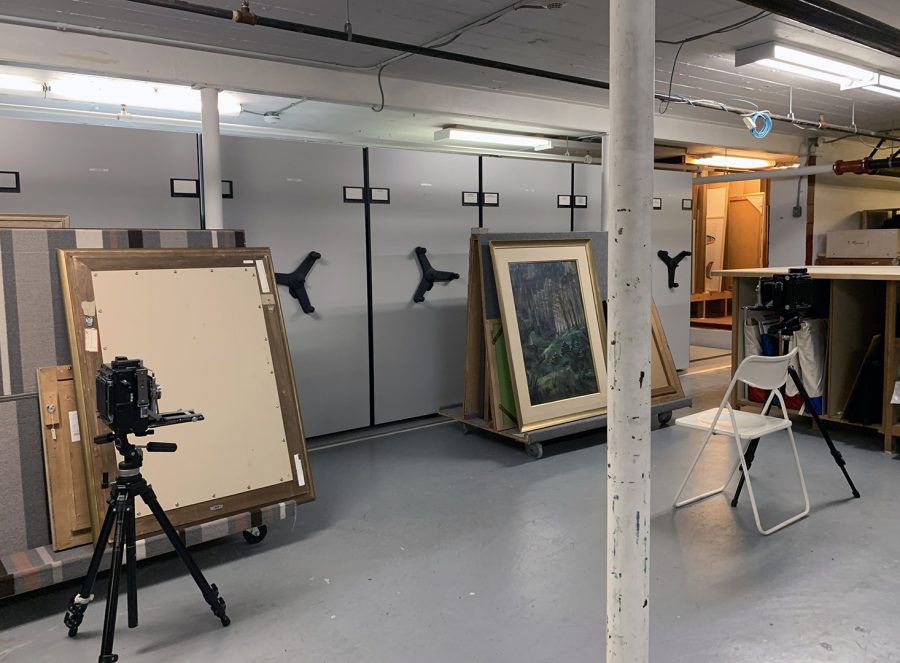
My camera on its tripod appears motionless as it documents my ‘sitting meditation’ in the collections vault at the University of Victoria. I am with a painting by Nita Forest. I go on to do a series of these ‘sittings’ spending time in various vaults with the art of women working in Victoria a generation before me. Likely never to leave the vault, I think of their work as actively resting. My ‘sitting’ proceeds until I feel the film will have been adequately exposed, this is usually about 8 – 20 minutes. The camera is not as motionless as it looks. Every nuance of light bathes the 4” X 5” film and records all within its gaze. Neither am I as docile as I appear but am also actively resting. My mind is busy, my eyes and ears are open and I am ‘being’. I sit, I focus on my breath, in, out, in, out… I think of how the artist applied the blue paint… I let this thought go and come back to the breath, in, out, in, out, in, out, in, out, my thinking turns to the vault space itself, again back to the breath, in, out, in, out, I think about the colours, I think about the subject matter, a portrait, back to the breath, in, out, in, out…. Thoughts arise and without judgment I let them drift away and come back to the breath. The space itself is also active, I hear someone banging away on the next floor, I think about the lighting, I come back to the breath.
As an ongoing project I have documented approximately 50 sittings to date.
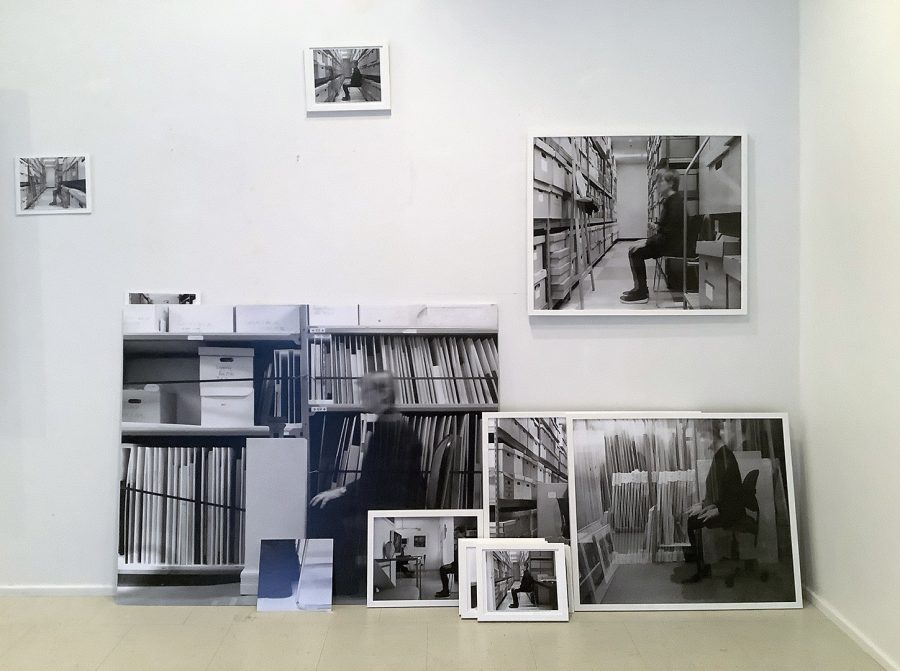


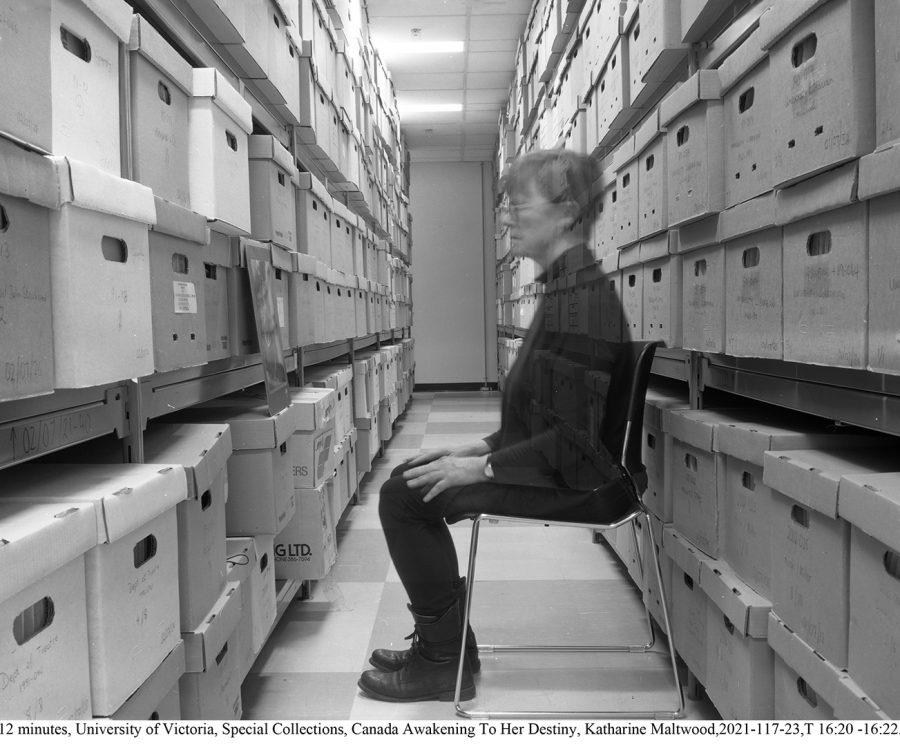
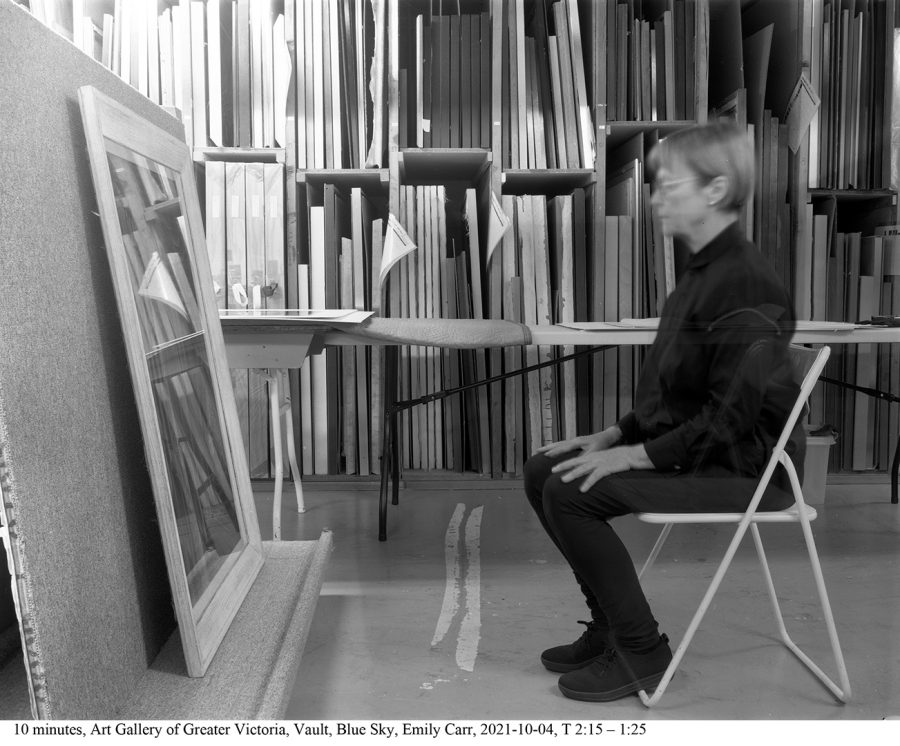
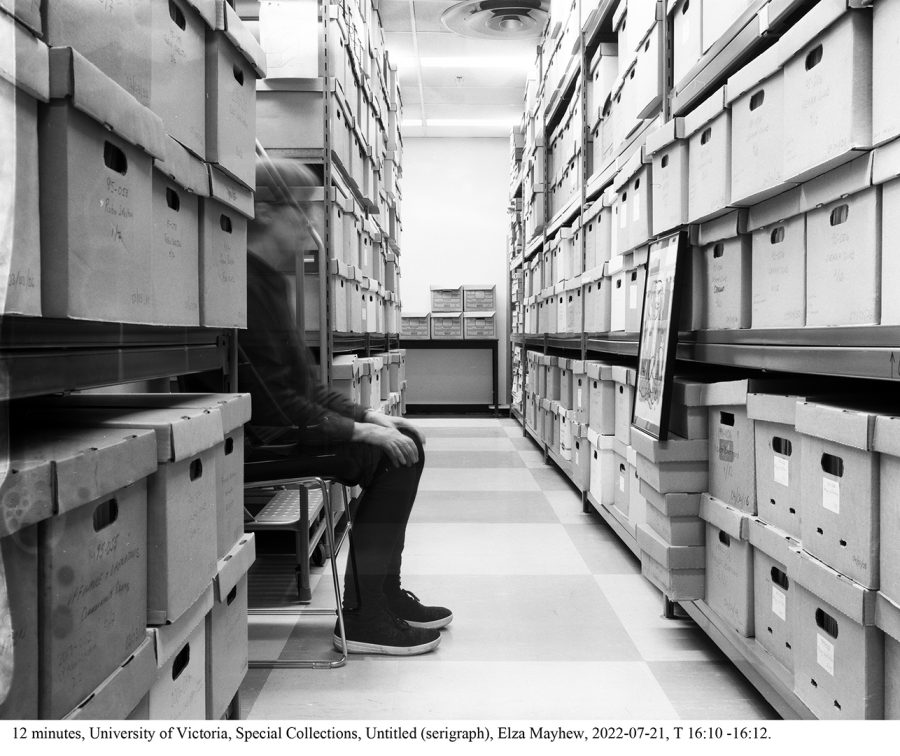
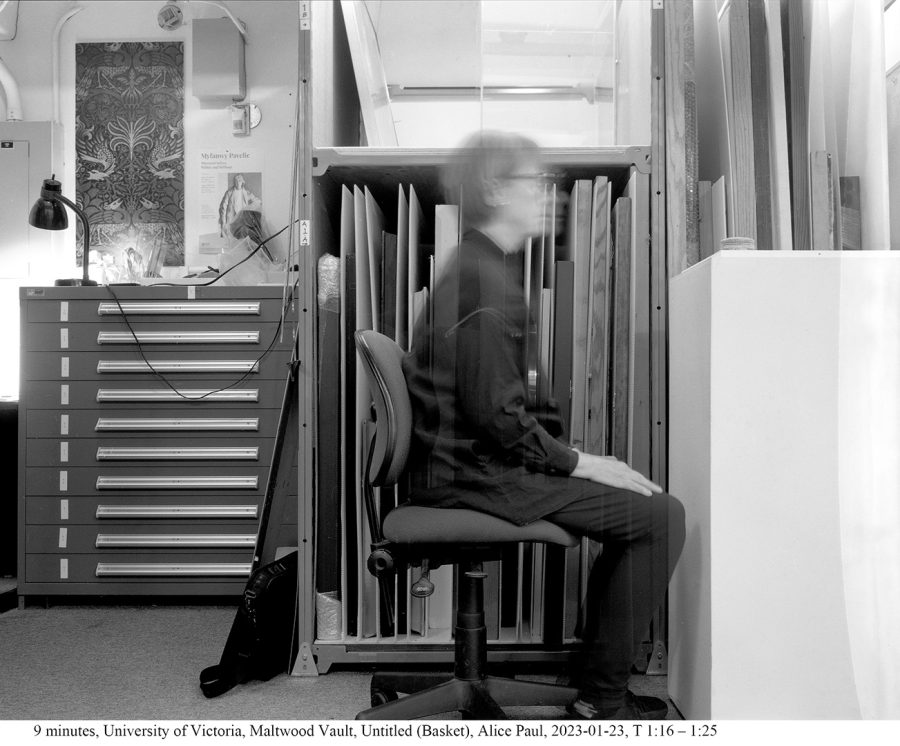
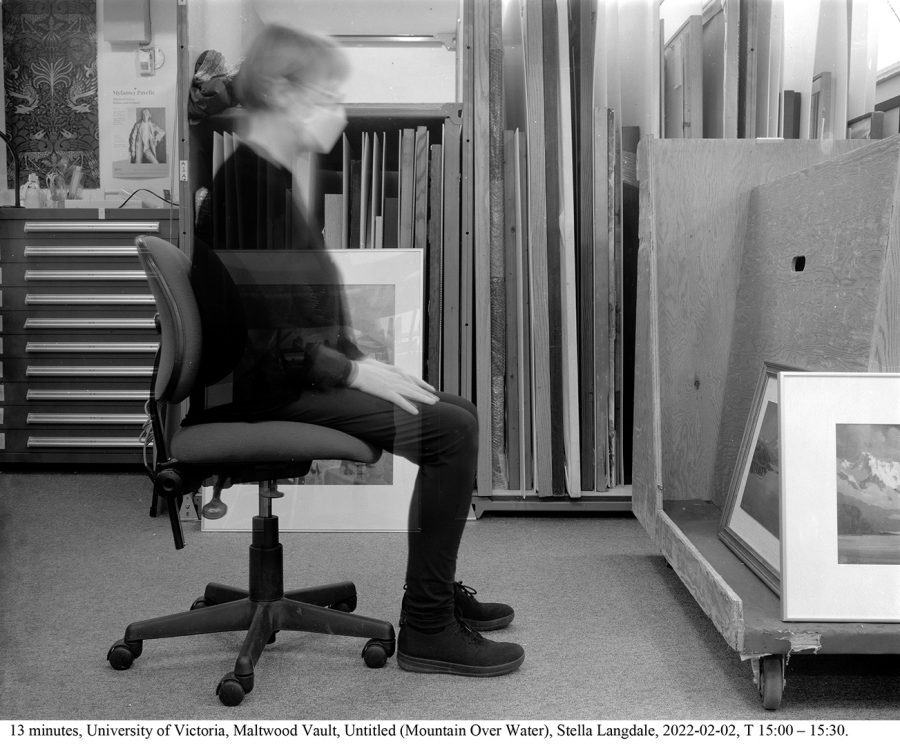
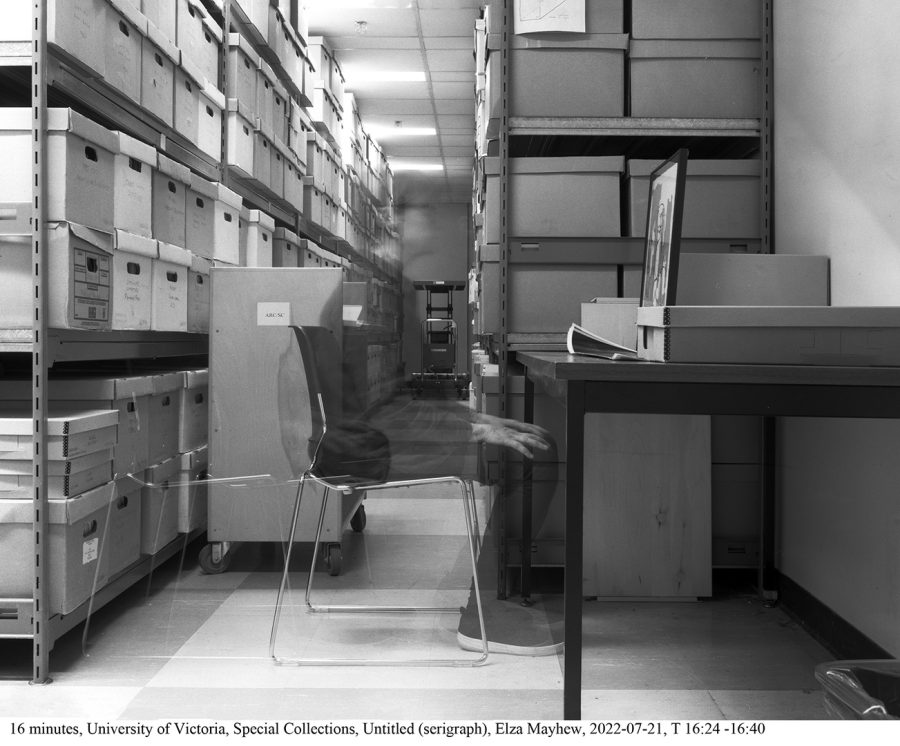
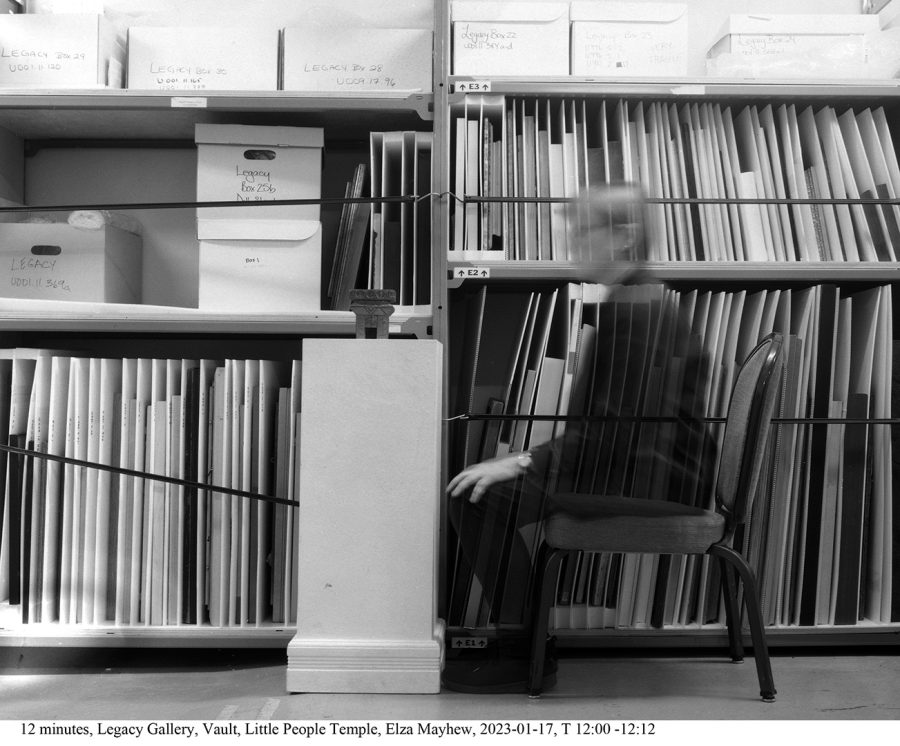
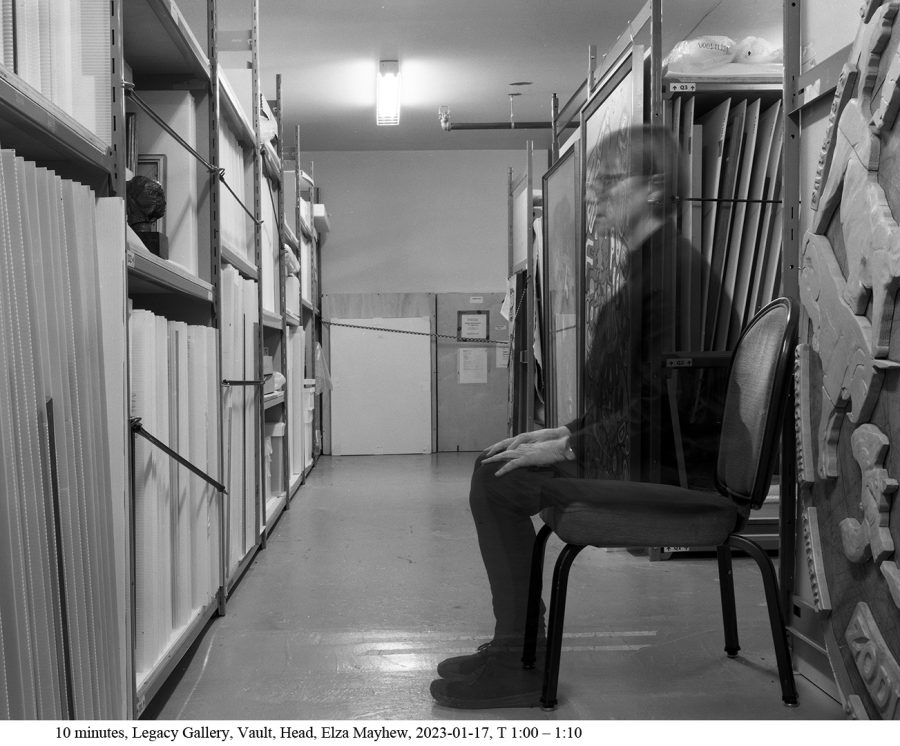
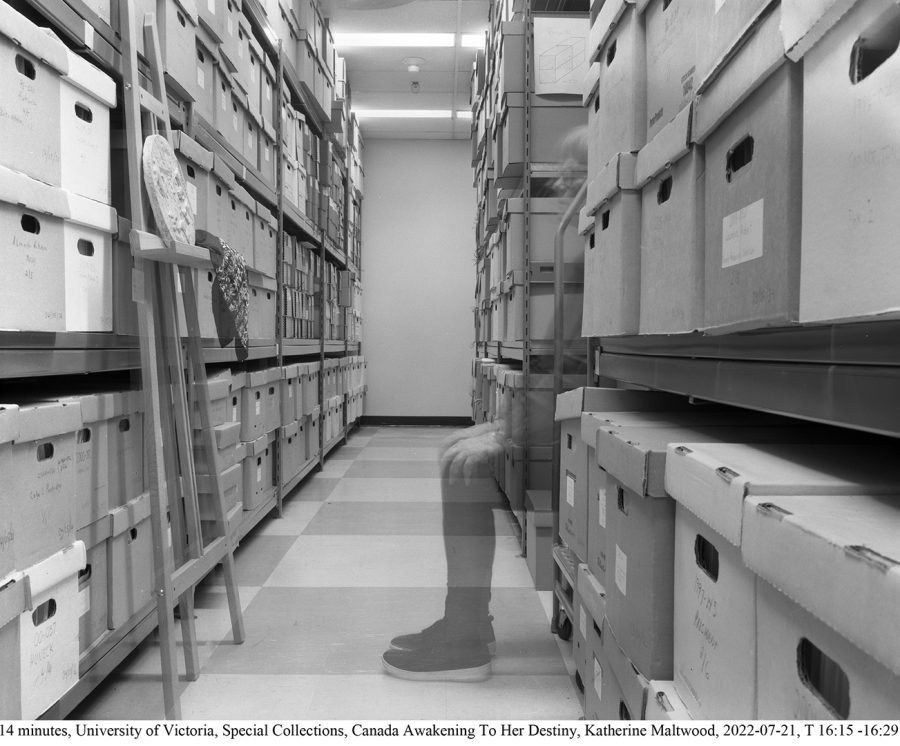
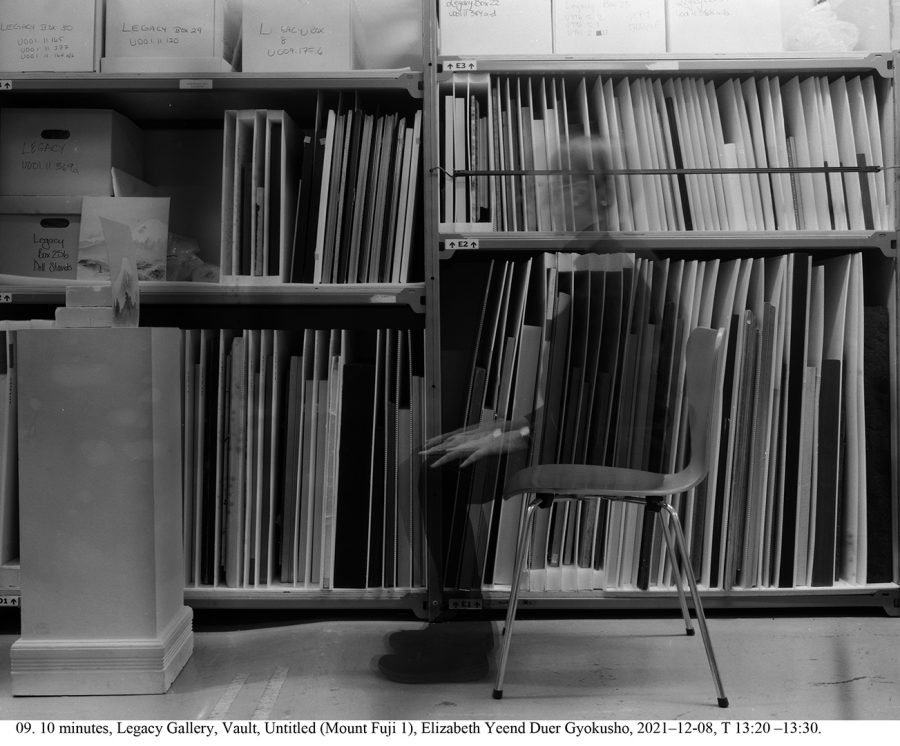
In the recent past I have documented various ‘sittings’, i.e. in Meditation on the Studio Wall (2016 and 2018), I studied my studio wall which had a long history as a rooming house, a shrine room and later an artist studio. Much like the work of these women artists, its history too was mostly unavailable yet the wall seemed alive. The wall had always seemed to me to evoke so much more than it’s white paint revealed. These vaults too have a hidden and often unavailable history, yet vital energy.
Photography tends to privilege the ‘gaze’, however awareness practices such as meditation contextualize the gaze alongside our other senses in a somatic practice, and as a means to rest the mind in order to more fully experience our relationship to the subject to which we are directing out attention. This practice shifts the experience of looking from a totalizing approach that essentializes the subject to one that considers it within an expanded experiential context. The experience of sitting is an attempt to move beyond a dualistic relationship between the subject and object. What the camera and the resulting ‘sitting’ photographs evoke is interiority, the experience within the mind.